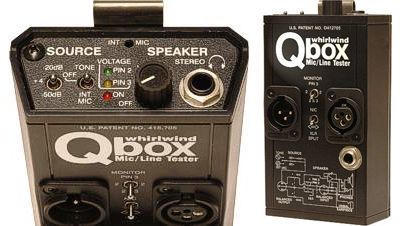
A New Generation
A tool that can be invaluable for system troubleshooting and setup is a portable generator/monitor unit. This “black box” can be used to generate or listen to signals, from mic level to amp drive level, at any point in the sound system.
This type of tester usually consists of two sections, a signal generator and a monitor. The generator section should be designed to produce audio signals at various levels. By injecting the appropriate level at various places in a system, proper setup or functioning can be verified at every point from the power amplifiers back to the microphones.
For example, a person can inject a microphone signal at the stage box and identify where or if it arrives at the board – unassisted and without uttering a single “check.” Or a mic signal can be injected into the console, with its path and proper routing confirmed through to the output – without the need of a microphone.
Have a problem with a dead power amplifier channel? Start at the input of the power amp and inject line level signal. If the amp works, continue to inject at each point going back toward the console (amp rack input, cable from crossover output, crossover input, etc.). When the channel quits, you have identified the bad component quickly and in an organized manner.
The monitor section of this type of tool consists of a circuit that can be used to listen to any mic or line signal in the system. You can use this feature to troubleshoot a system because it allows you to verify the presence of signal and/or confirm its level at any point. (The Whirlwind Qbox, pictured here, features a built-in loudspeaker/headphone section—the position of the volume control indicates the approximate level of the signal. LEDs also illuminate when phantom or intercom power is detected).
There are other uses for the monitor function besides use in set-up and troubleshooting:
* The unit can be set on stage or clipped on a belt and used as a squawk box to give directions to the crew before the system gets powered up.
* Use one as a console or line monitor during remote broadcasts or any time a small powered monitor loudspeaker needs to be set up quickly.
* Connect two units together with their mic and headphone sections active at the same time for a quick and easy hands free 2-way intercom.
The bottom line is that a good portable generator/monitor can be one of your best friends when setting up or shaking out a problem system.
Al Keltz works with Whirlwind USA.

